If you’ve been a writer in any capacity — whether a self promoter, lifestyle blogger, corporate marketing guru, journalist, or any other style of writing — you know one simple truth: writing headlines is hard. It really shouldn’t be; you spend hour after hour writing and editing and perfecting your content, so your headline should be the easy part. Right?
Sadly, that is usually not the case. Fear not, however, because in this post, we will go over the process of crafting quality magazine headlines and share what you can learn from them — no matter what kind of writing you do. We will cover aspects of great and not-so-great examples, things to avoid, and how to apply basic principles to your own writing.
What Makes for Great Magazine Headlines That Marketers and Other Writers Can Learn From?
How are we supposed to write magazine headlines? There are many things that can make a headline succeed and many that can make it fail. Let’s start with a few key aspects of successful headlines we can learn in other work.
They’re Creative
A great magazine headline is, first and foremost, a creative one. In magazine writing, there is a great incentive to be bold and creative — implying that if you’re not, you simply won’t be purchased off the magazine rack. In the fierce competition for people’s attention, it is essential for magazines to try different headline styles and think outside the box in how they approach writing their headlines.
Imagine you’re at the grocery store, and a magazine catches your eye. What kind of headline does the magazine have? Probably not the kind of straightforward headlines that you would see in your average newspaper. If it catches your attention, you are far more likely to spend your money to read the magazine — rewarding the creative writer over the bland one.
They Have a Clear Angle
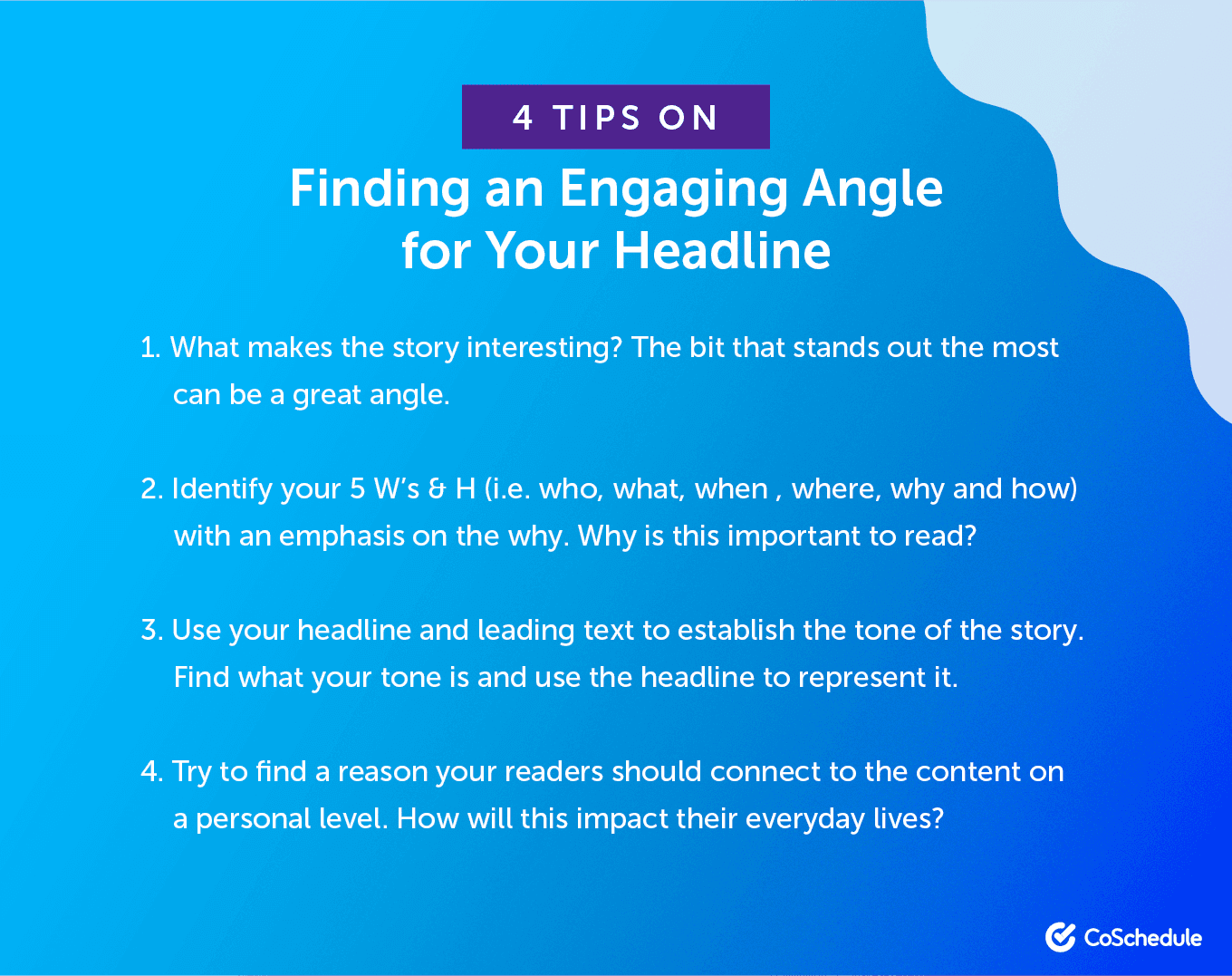
Another main characteristic of a great magazine headline is a clear angle for the article. You don’t have time to tiptoe around the topic of your article when you’re competing against other magazines for readers’ attention, so you need to be transparent.
If you aren’t clear about the angle and contents of your article, your audience will be far less likely to come back to you for information. By representing your articles honestly through your headlines, you build trust with your readers and they are more likely to read your magazine again.
They Use Emotional Language
Using emotional language within your headlines can create powerful connections amongst your audience to your content. When writing your headline, try to ask yourself: “What wording will help create an emotional connection between my audience and this content?”
The best headlines utilize emotion to get their readers invested in the story. Connecting with readers on an emotional level is the absolute best way to engage them with your content.
They Leave the Reader Wanting More
Finally, when writing your headlines you need to keep in mind that you are not just trying to describe your article to readers, you are trying to get them to actually read your content. In order to accomplish this goal, it is vital that you don’t give away too much information in your headline.
If your readers can just look at your headline and know what the article is and what you have to say, they’ll have no reason to read into the body copy. For this reason, you need to make sure that you only give them a little taste of your article — just enough to leave them wanting more.
What Makes for Less Than Stellar Magazine Headlines That Marketers and Other Writers Should Be Careful to Avoid?
Now that we’ve covered some aspects of killer magazine headlines, let’s take a look at some characteristics of headlines that don’t accomplish what they are meant to.
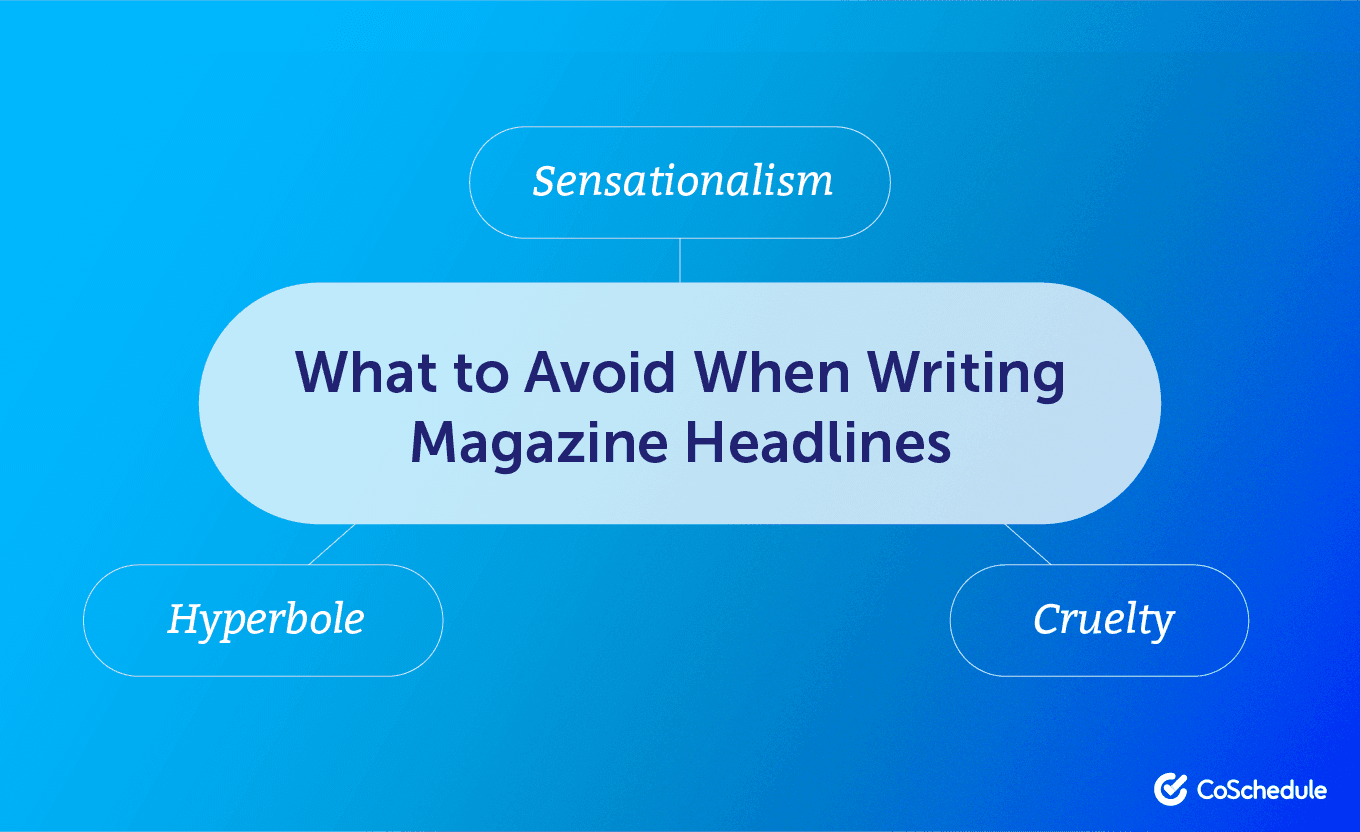
Sensationalism
Sensationalism refers to dramatized — usually unverifiable or outright false — information most commonly seen in the magazine context within so-called “tabloid” magazines and when more legitimate magazines blow real issues entirely out of proportion.
These kinds of headlines are most often used to try and lure in readers, but they usually just result in fewer readers. This happens because people will begin to realize that your magazine is misrepresenting information and lose trust in your publication.
Hyperbole
Hyperboles — which is most often defined as exaggerated statements that are not meant to be taken seriously — make for poor magazine headlines. Readers are interested in reading magazine articles because they want to learn real, verifiable facts, but hyperbolic writing misconstrues the facts and ultimately destroys trust that readers have for the publication as a source of news.
The use of a hyperbole in a headline overstates what an article can actually deliver and leave readers disappointed when they actually get into the copy of the article.
Cruelty
Cruelty, as used in magazine writing, is mostly seen in tabloids when the publication exploits the misfortune of others in order to gain attention for their magazine.
It’s pretty clear why this is something to avoid in our work, but it should be noted that these types of headlines are likely to turn off readers actually reading your content. This is a misrepresentation of the truth and takes advantage of others’ misfortune — something educated readers can sniff out and avoid quite easily.
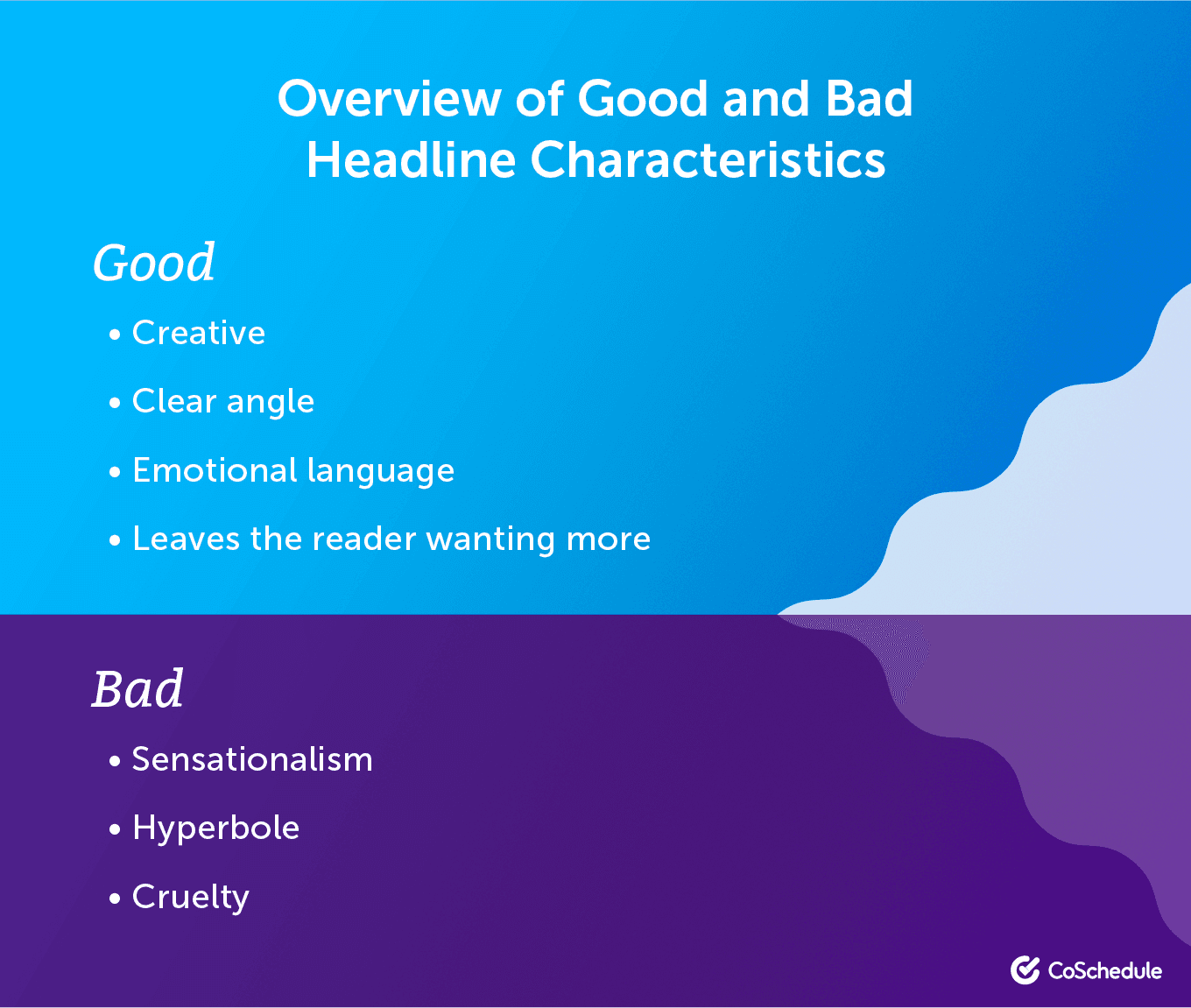
Four Great Magazine Headline Examples
Below are a few examples of quality magazine covers which feature great headlines to promote their content.
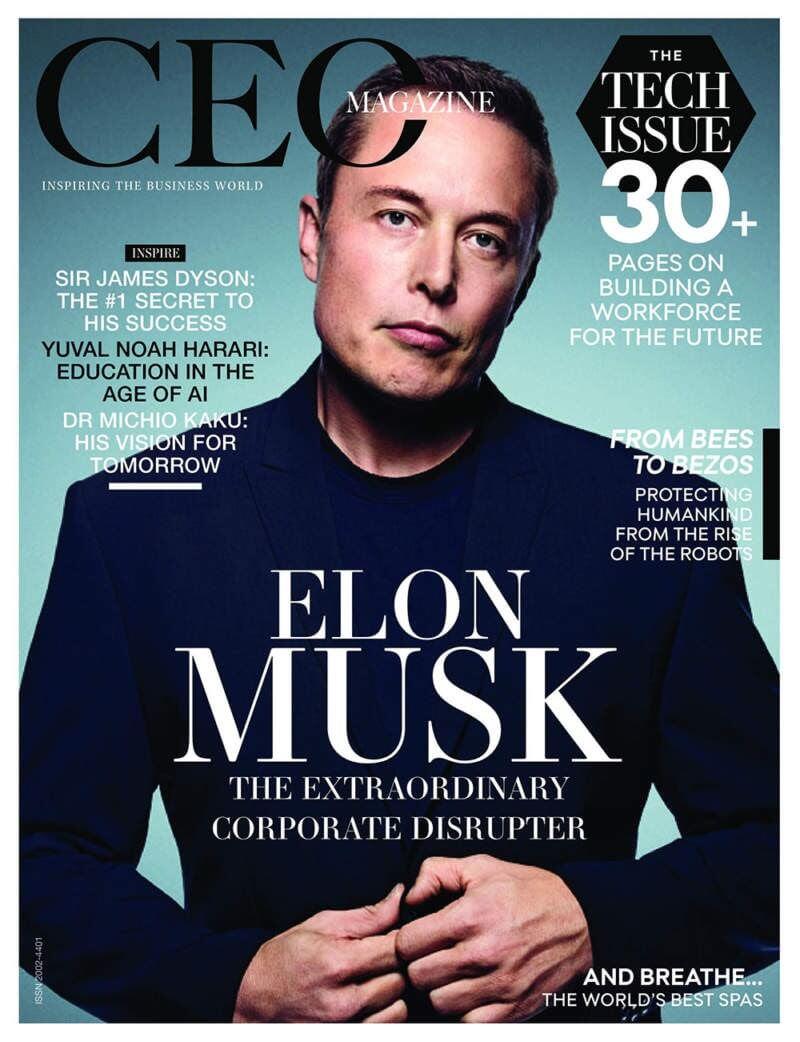
This November 2018 issue of CEO Magazine features Elon Musk, a giant in the technology industry, as their main story with the headline “Elon Musk; The Extraordinary Corporate Disrupter”.
This headline is clear in describing the story’s angle, stands out in a creative way to the magazine’s audience by offering a different perspective on a well-known figure, and leaves the reader with a sense of curiosity as to why and how Musk is disrupting corporations. These aspects make it a solid headline and likely to draw in more readers.
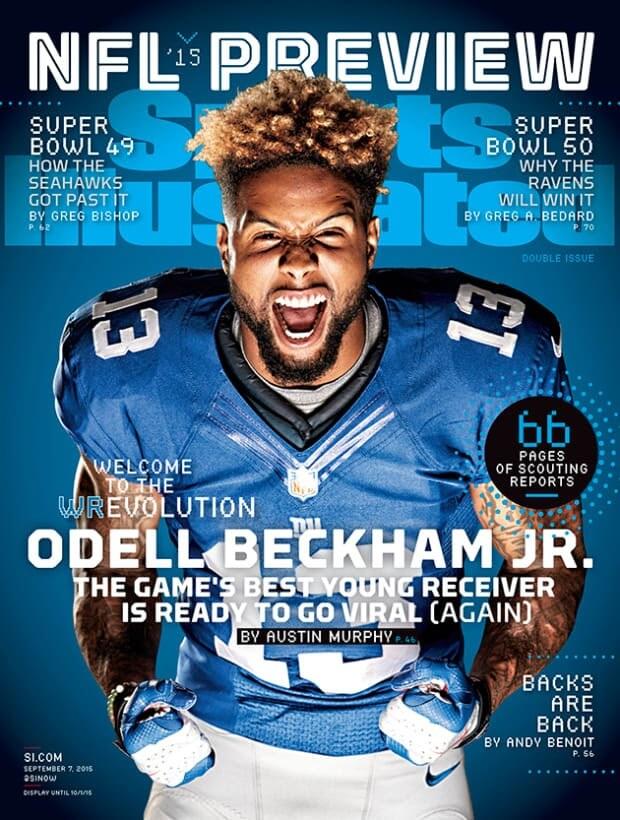
This September 2015 issue of Sports Illustrated features NFL wide receiver Odell Beckham Jr. with the headline “Welcome to the WR Evolution; Odell Beckham Jr., The Game’s Best Young Receiver, Is Ready to Go Viral (Again)”.
This headline serves to creatively reintroduce Beckham Jr. — who, at this time, was already a well-known athlete for sports fans — as a must-watch and must-read, athlete. The angle on this one is a little shaky, but the headline definitely leaves the reader wanting more information regarding Beckham and his team’s future. Coupled with the powerful image of Beckham Jr., this headline serves its purpose of enticing readers to dig into the body copy.
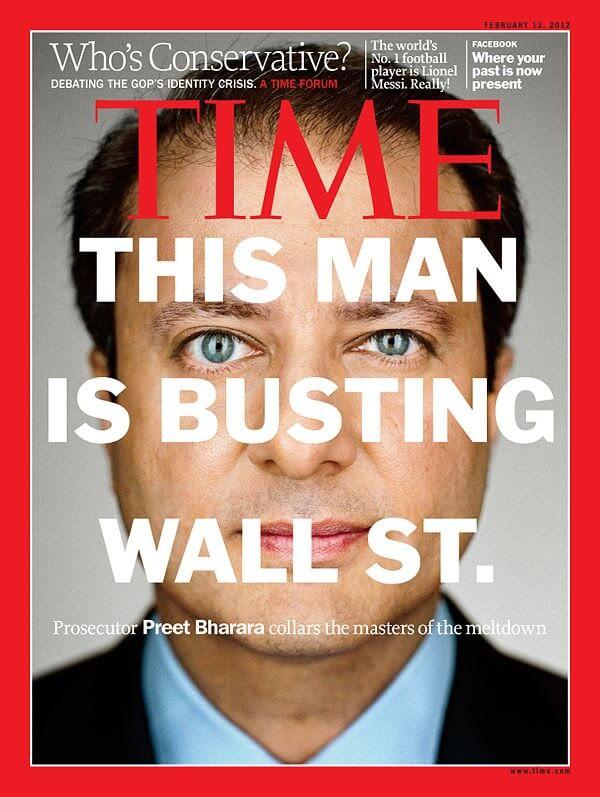
This Time magazine cover from September 2012 features the photo of a man who was probably unknown to most people at the time, but still manages to make itself an interesting cover which can draw people into reading the magazine.
It does this by providing a clear angle on a topic which was still heavily on the minds of some readers: the 2008 Wall Street crash. It then introduces Preet Bharara, who is on the cover, as the man “Busting Wall St.,” and says he “collars the masters of the meltdown”.
This kind of clear, somewhat emotional, language should intrigue readers, but it also leaves enough to the imagination that it should entice people to pick up the magazine, which is the ultimate goal of magazine headline writing.
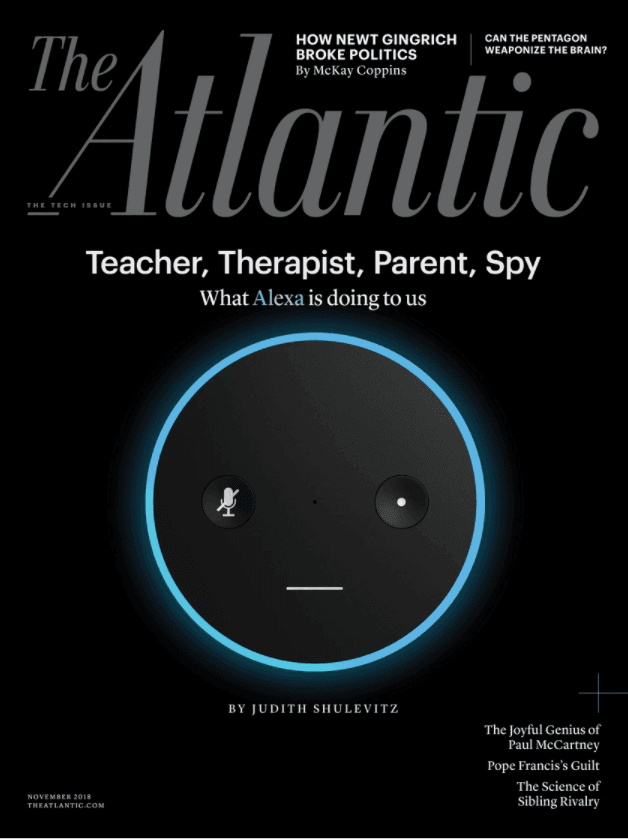
This cover for the November 2018 issue of The Atlantic is a great example of creativity and emotion in magazine headlines.
Paired with an image showing Amazon Alexa as a face — thus, humanizing the device — the headline “Teacher, Therapist, Parent, Spy; What Alexa is doing to us”, provides a clear angle on what the article will be about, adds more to the humanization of the device which contributes to the emotions of the article, and leaves the reader asking themselves, “What is Alexa doing to us?”
All these aspects serve to make this a great magazine headline.
Check out these great headline examples for more headlines in different styles.
How to Apply Magazine Writing Principles to Your Own Titles
By now, you hopefully have a good understanding of how magazine headlines are crafted and what some characteristics of a good magazine headline are. If you aren’t actually a magazine writer, what does this information mean for you? Here are a few things to take from this article and apply to your own titles.
In addition, check out this guide to writing headlines that increase traffic.
Identify a Clear Angle
A clear angle in your title is valuable no matter your medium. If you can clearly represent what your article has to offer, you will have a great chance to increase engagement with your content.
Some things to consider when trying to identify your angle:
- What is my article about?
- What is unique about the perspective of this article?
- Why would my audience care?
Answering these questions can give you insight into the best angle to approach.
Identify an Information Gap
Use your headline to address information or curiosity gaps on your topic. An information gap is the space between what your audience knows about a topic and what they want to know. Addressing these gaps in your title will open up your article to people who really want to learn more about the topic, and these people are the ones who you really want reading your content.
The other way to look at information gaps is that you should create a gap in information within your headline. This happens when you provide information on the action and the outcome, but force the reader to read your content in order to learn how the action actually inspires the outcome. Learn more about using information gaps to get people to click.
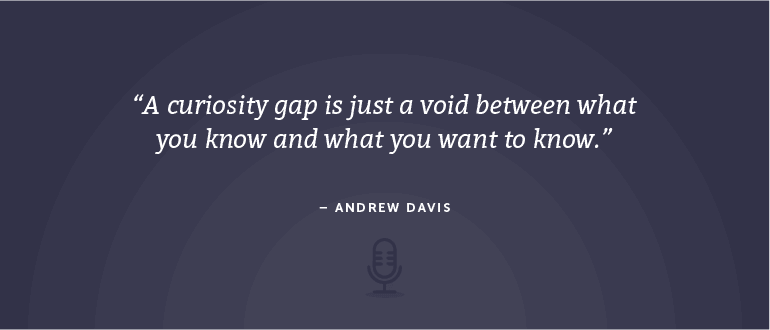
A great example of this is an article from SB Nation about a freak pie accident.

The headline for this article is “A Freak Pie Mishap Once Ended a Baseball Player’s Season”. This headline creates an information gap because it offers the action (a freak pie mishap) and the outcome (ended a baseball player’s season), but does not explain how the action influenced the outcome. This creates an information gap and draws readers into the article as they try to comprehend what happened to make such a statement true.
Identify Emotional Language to Give Your Headline Power
Emotional language, as mentioned before, is one of the best ways to connect to your audience through your headline. Use of emotional words, like the ones in this list, can get your audience invested in your content and increase engagement around your articles.
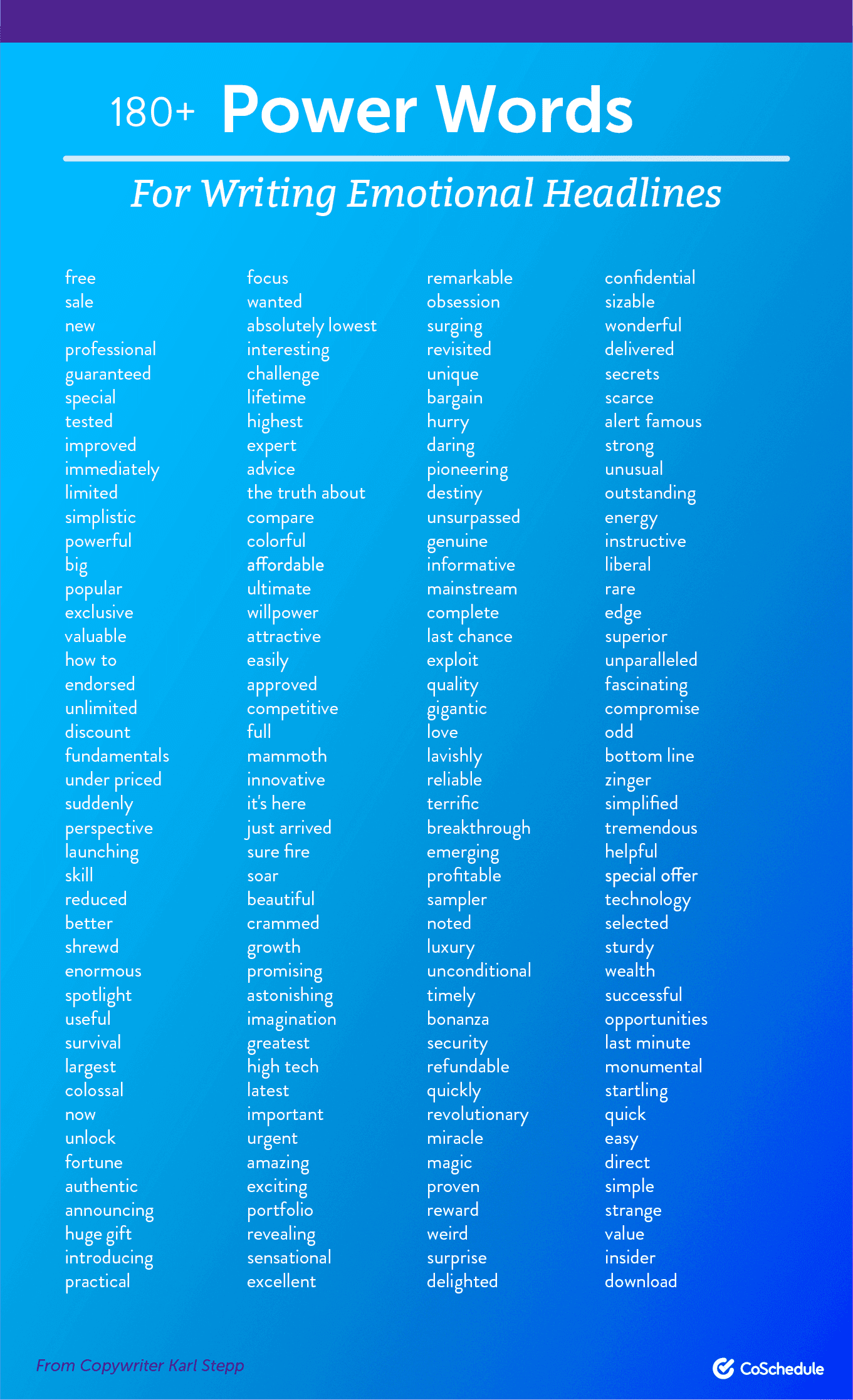
Use Headline Analyzer Studio to Write Tons of Headline Options
This is an essential step in the headline writing process and something I would recommend to anyone trying to write a headline. Sit down, read your article over, and then write as many headlines as you can. We recommend at least 20–25 different versions. You can and should use headline formulas and templates to help work through this step.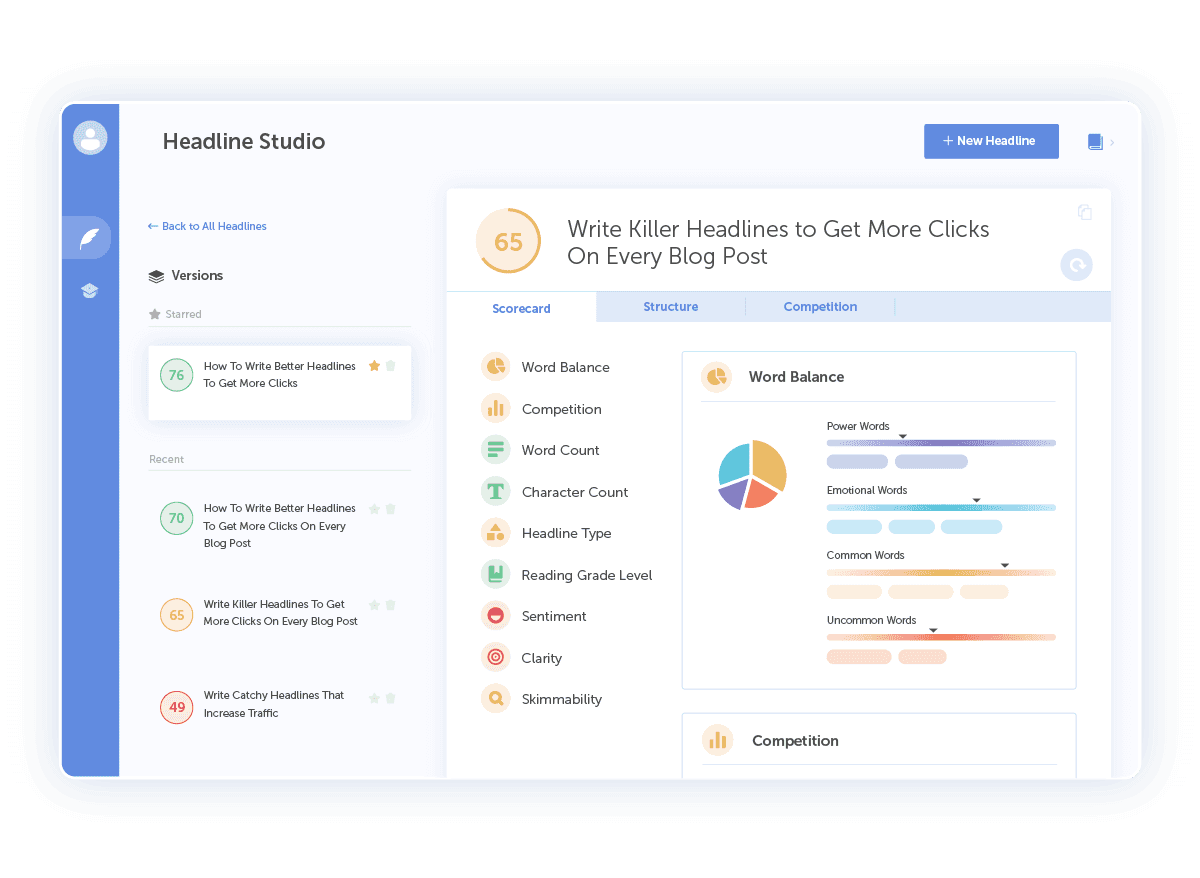
Headline Analyzer Studio is the perfect tool for this part of the process, as it will score each version of your headline and give you tips and tools to improve as you go — ensuring that the more you write the better your headlines will be.
Narrow Down Best Options and Select a Winner
Once you have a huge collection of headlines, narrow your list down to your favorites, the ones with the highest scores, or the ones you think will perform best. Pick the best headline by considering what would make your target audience want to click and learn more.
Monitor Engagement and Apply What You Learn to Your Next Headline
Last — but certainly not least — after you ship your content, you should be sure to measure and monitor certain parts of engagement from your audience and compare engagement between different types of content, or between similar content with different headlines.
The two main options for engagement measurement are social media in-app analytics and google analytics. Since social analytics are more self-explanatory (though this guide should help if you’re unsure of how they work), I will detail how to use google analytics to measure social engagement.
Open your Google analytics account (if you don’t have one, sign up) and click on “Acquisition”. This will show you where your site traffic is coming from.
Next, select “Social” and then “Network Referrals”. Now, you will see which socials are pulling in traffic for your site and which ones aren’t.
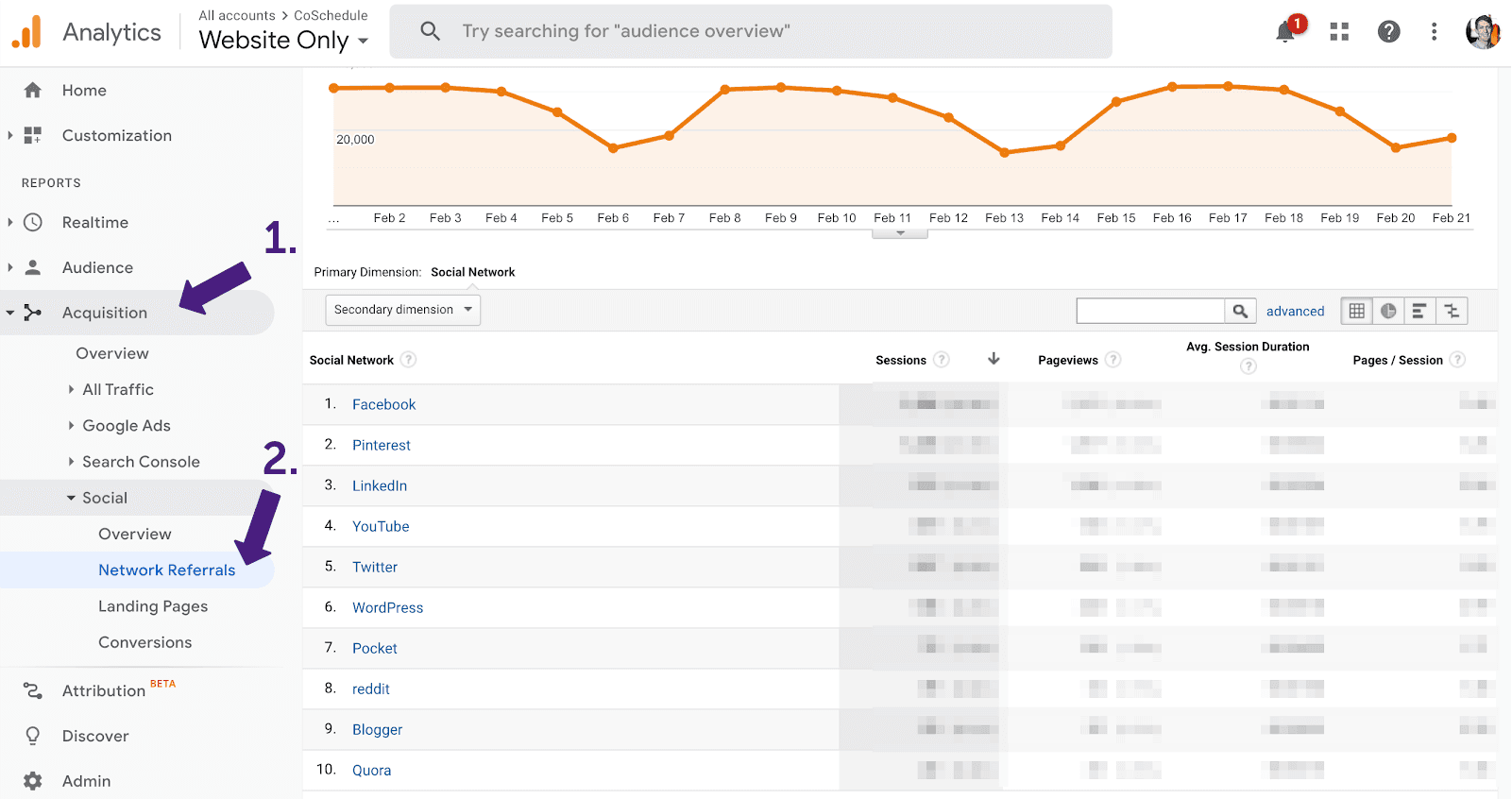
This is the most valuable part of the writing process because if you can be consistent in measuring success, then your content will steadily improve over time and eventually come to better serve your audience.
A great way to do this is to use our headline performance tracking template. This template gives you a place to record all the stats from your articles — allowing you to look back and see what is performing well versus what isn’t.
Wrap-Up
In this post, we’ve covered the items that can make or break your magazine headlines, some examples of great magazine headlines, and the process for transferring magazine writing practices to your own writing. By applying best practices for magazine headline writing to your own content, you can create headlines which will actually get people to interact with your content marketing.
Now, go out and write great headlines! You may not be competing on the magazine rack, but the competition for consumers’ trust, time, and money is fierce, and these lessons can help you become the best marketer possible.

